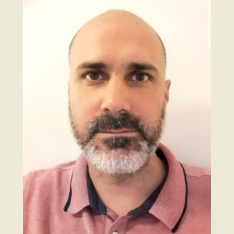Nanosecond Discharge Processes in Liquid Water
A special issue of Processes (ISSN 2227-9717). This special issue belongs to the section "Chemical Processes and Systems".
Deadline for manuscript submissions: closed (31 August 2022) | Viewed by 6529
Special Issue Editors
Interests: optical and electrical diagnostics; energy transfer processes; streamer discharges
Interests: simulations and theory related to nanosecond discharges in liquid water; streamer discharges; plasma jets and dielectric barrier discharges simulations; vibrational kinetics in N2-O2 streamer discharges; sensitivity analysis and uncertainty quantification of kinetic schemes; fluid modeling of Hall-effect thrusters
Special Issue Information
Dear Colleagues,
Electrical discharges in liquid water initiated by high-voltage pulses of (sub)nanosecond duration is a very complex phenomenon. It likely involves the disruption of the cohesion and structure of liquid water on a molecular level through the generation and multiplication of nanoruptures or nanovoids followed by the production and multiplication of charged species in a highly collisional environment. These electrostriction-driven processes may compete or be supplemented by alternative ionization processes occurring on the metal–liquid interface, such as field ionization. Ultrafast processes associated with the re-arrangement of the H-bonded liquid water matrix under the influence of a transient external electric field allow the onset and evolution of plasma filaments without the occurrence of liquid-to-gas phase transition. This makes a substantial difference between discharge systems based on (sub)ns and μs-ms high-voltage sources.
In order to find plausible interpretation of experimental observables through a consistent theory, further targeted experiments performed with extreme spatio-temporal resolutions and complemented with advanced modeling are necessary. For example, reliable experimental data on pressure fields developing during the first nanoseconds of the discharge events together with extended analysis of UV (<300 nm) and NIR (>800 nm) plasma-induced emission might help to identify the most important plasma parameters, such as the density and mean energy of electrons in plasma filaments.
Models for the dynamics of a dielectric liquid in a nonuniform pulsed electric field, the formation of discontinuities, electron multiplication, and the search for the possible sources of the primary electrons constitute basic topics of the current research. Validated models can reveal the possible physical scenarios and provide a solid testing ground in the quest for the sequence of events leading to the development of the nanosecond plasmas in liquid water.
This Special Issue on “Nanosecond Discharge Processes in Liquid Water” aims to highlight recent advances both in experiments and computational modeling addressing key issues of ultrafast plasma formation in polar liquids, namely in water.
Topics include, but are not limited to:
- Signatures of ultrafast processes associated with plasma formation in liquid water;
- Novel diagnostic approaches performed at a (sub)ns resolution in time and sub(μm) resolution in space;
- Experimental fingerprints differentiating the direct breakdown in liquid from bubble-assisted breakdown (e.g., radiative and acoustic signatures, energy efficiency of discharge products);
- Dynamics of a dielectric liquid in pulsed electric fields;
- Nucleation theory and cavitation in pulsed electric fields;
- Sources of primary electrons and mechanisms of electron multiplication;
- Model weaving.
Dr. Milan Simek
Dr. Zdenek Bonaventura
Guest Editors
Manuscript Submission Information
Manuscripts should be submitted online at www.mdpi.com by registering and logging in to this website. Once you are registered, click here to go to the submission form. Manuscripts can be submitted until the deadline. All submissions that pass pre-check are peer-reviewed. Accepted papers will be published continuously in the journal (as soon as accepted) and will be listed together on the special issue website. Research articles, review articles as well as short communications are invited. For planned papers, a title and short abstract (about 250 words) can be sent to the Editorial Office for assessment.
Submitted manuscripts should not have been published previously, nor be under consideration for publication elsewhere (except conference proceedings papers). All manuscripts are thoroughly refereed through a single-blind peer-review process. A guide for authors and other relevant information for submission of manuscripts is available on the Instructions for Authors page. Processes is an international peer-reviewed open access semimonthly journal published by MDPI.
Please visit the Instructions for Authors page before submitting a manuscript. The Article Processing Charge (APC) for publication in this open access journal is 2400 CHF (Swiss Francs). Submitted papers should be well formatted and use good English. Authors may use MDPI's English editing service prior to publication or during author revisions.
Keywords
- water
- H-bond
- polar liquids
- electrostriction
- field ionization
- bremsstrahlung
- recombination
- ions
- electron multiplication
- nucleation
- cavitation
Benefits of Publishing in a Special Issue
- Ease of navigation: Grouping papers by topic helps scholars navigate broad scope journals more efficiently.
- Greater discoverability: Special Issues support the reach and impact of scientific research. Articles in Special Issues are more discoverable and cited more frequently.
- Expansion of research network: Special Issues facilitate connections among authors, fostering scientific collaborations.
- External promotion: Articles in Special Issues are often promoted through the journal's social media, increasing their visibility.
- Reprint: MDPI Books provides the opportunity to republish successful Special Issues in book format, both online and in print.
Further information on MDPI's Special Issue policies can be found here.






